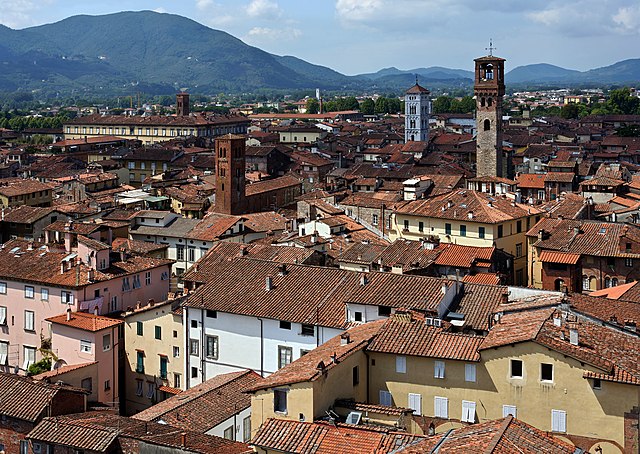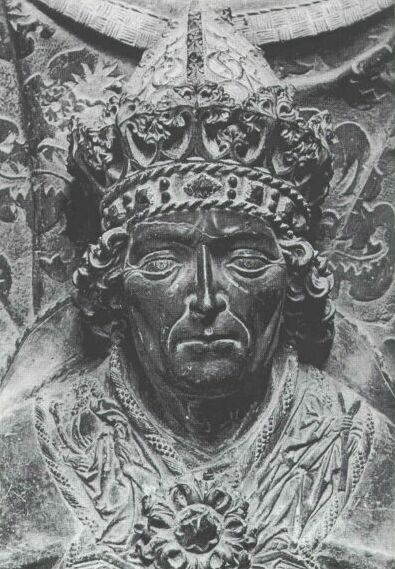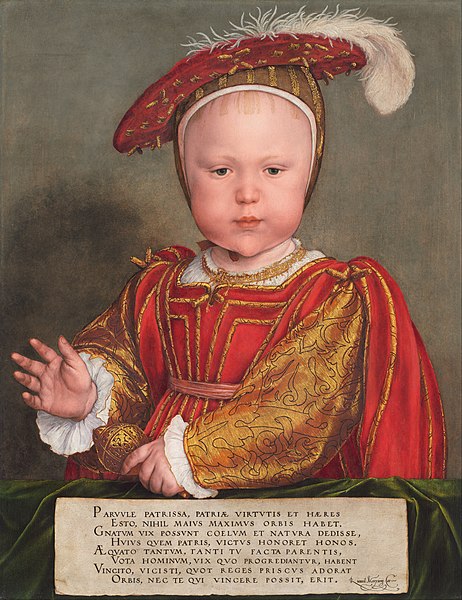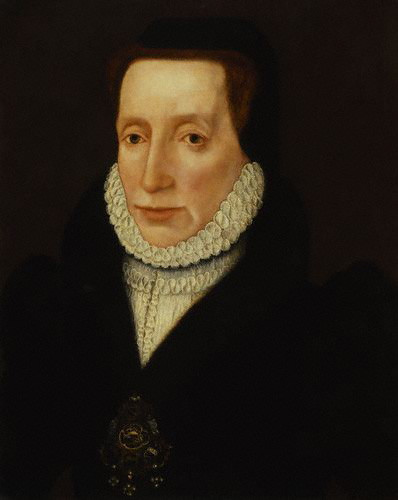 |
| Robert the Wise |
The Kingdom of Naples
Born in
March 1328 Joanna
was the fourth child of Charles, Duke of Calabria and his second
wife Marie de Valois. Three siblings predeceased her;
Eloisa who lived 10-11 months in 1325, Maria who was born in 1326 and died
sometime in 1328 and Charles Martel who lived eight days in April 1327.
A second Maria followed in May 1329, born
posthumously after the death of her father on 9th November 1328.
Joanna’s
father was the son of King Robert the Wise of Naples and Charles was his
father’s heir. The kingdom of Naples[i] stretched from the Apennines to Calabria. Naples had been a papal fief since Charles of Anjou conquered it using papal funds. In a contract dated
November 1265 Charles and his heirs had to pay the papal treasury eight
thousand ounces of gold[ii] annually and a white
horse every three years.
The kingdom
of Naples was seen to have just laws and with a stable currency and secure
roads, hostels for travelling merchants, tournaments for the nobility the
kingdom was attractive to those searching for stability. Robert’s court
attracted Petrarch who sought Robert’s literary
approval. Petrarch wrote of him;
‘Who in Italy, and indeed
throughout Europe is more outstanding than Robert?’[iii]
‘Happy, peaceful, generous
and magnificent Naples with its one monarch’[v]
as opposed
to his native Florence.
Charles had
been a high spirited teenager and Robert had employed one Eleazar to tutor his
son. Charles was given the dukedom of Calabria in his early twenties and in
1322 was entrusted with dislodging the current Aragonese king of Sicily Frederick III. Like the several attempts that
Robert had made, Charles was unsuccessful but he acquitted himself with honour
on the battlefield and made his name as a soldier.
When
Charles’ first wife Catherine of Hapsburg, daughter of Albert I of Germany, died childless in 1323, Robert sent Eleazar to help
negotiate the marriage with Marie. The fifteen year old Marie married the 26
year old Charles in 1324.
Italian Politics
 |
| Lucca |
In 1326 at
the age of 28 Charles was employed by the ruling Guelph[vi] Florentines to defend the city
against the Lord of neighbouring Lucca, the Ghibelline[vii] Castruccio Castracani. The Florentines were prepared to
pay Charles two hundred thousand gold florins[viii] and give him control of
Florence.
Charles and
his wife Marie moved their court to Florence, where his rule was not
universally popular. Charles spent twice the allocated monies which caused
upset, although his supporters claimed that the arrival of the court meant an
increase in business for tailors and cloth merchants if no-one else. The wives
of the Florentine burghers and merchants were quick to follow the fashions worn
by Marie and her ladies;
‘In the year 1326….the Duke
of Calabria, at the petition which the ladies of Florence made to the duchess
his wife, restored to the said ladies a certain unbecoming and disreputable
ornament of thick tresses of white and yellow silk which they wore about their
faces instead of their hair.’[ix]
Joanna was
born in or en route to Florence and when the family returned to Naples in 1328 Marie
was again pregnant.
The Invasion of the Holy Roman Emperor
 |
| Louis of Bavaria |
The
Ghibellines invited the Holy Roman Emperor, Louis of Bavaria[x], to invade Italy. Louis, who had been refused his
coronation as emperor[xi] by Pope John XXII, decided to invade the kingdom of Naples in return for
Robert’s temerity in sending Charles to Florence, thus upsetting the balance of
power in the region.
Louis formed
an alliance with Frederick III of Sicily, one of the most inveterate foes of
the Neapolitans. Louis attacked from the north and Frederick attacked from the
south. Louis’ advance down through Italy was unimpeded as most city states were
happy to pay tribute to be left alone. The Ghibelline cities of Milan, Verona, Ferrara and Mantua threw open their gates to the
imperial forces and were rewarded with imperial titles.
Louis
entered Rome in January 1328 and was crowned by one of his supporters, Sciara
Colonna. It was at this point that Robert called Charles home. Florence was
left to the care of a Viceroy and a standing army of 100,000 men.
From Avignon[xii]
Pope John issued a bull
denouncing Louis’ coronation and deposing him. In return Louis deposed the pope
and set up one of his choosing. Louis stayed in Rome and had himself re-crowned
by his new pope Nicholas
V on Whit Sunday.
‘The installation of the
anti-pope was a miscalculation of the first order and helped John XXII to a
cheap victory.’[xiii]
The
magnificent coronation ceremony cost so much Louis was unable to pay his
soldiers. Consequently, when the citizens of Rome rebelled in August 1328 Louis
was forced to retreat to Germany.
Even so disaster
struck the Neapolitan royal family; Charles died suddenly in November 1328,
from a fever brought on by over-exertion in Charles’ favourite sport, falconry.
This left the infant Joanna as Robert’s heir. Two years later in 1330 she was
given homage by the members of her grandfather’s court as his heir; a ceremony
that her great-uncle Philip and aunt Catherine de Valois[xiv] refused to attend.
A Tumultuous Childhood
 |
| Castel Nuovo |
Joanna lived
at her grandparents’ court at Castel Nuovo from the age of five. Her grandmother Queen Sancia was Robert’s second wife[xv]. Robert’s first wife, and
mother of his sons[xvi], Yolande was the daughter of the King of
Aragon, Peter III. Castel Nuovo became a centre of a ‘spiritual’ movement; Franciscans flocked to Naples. The queen’s brother, a friar James of
Majorca begged on the streets of the old town.
One of the
most important persons during Joanna’s childhood was her nurse Philippa, who
had been a wet nurse working for Joanna’s paternal grandmother Yolande. Before
she died in 1332 Marie made Philippa guardian of Joanna and Philippa’s husband[xvii] was made Robert’s Seneschal. Boccaccio was distinctly unimpressed;
‘What a ridiculous thing to
see an African from a slave prison, standing before Robert, the king,
performing royal service for the young nobleman, governing the court and making
laws for those in power!’[xviii]
 |
| Sancia of Majorca |
The
ultra-religious and ascetic Sancia undertook responsibility for Joanna and
Maria’s education after Marie’s death. Sancia’s influence was diluted by the
other members of the royal entourage. There were plenty of relatives who all
too ready for political intrigue and infighting; the ambitious focussed their
intrigues on Joanna, the power to come. But Boccaccio claimed that;
‘Nothing serious, arduous or
great was accomplished unless it was approved by Robert, Philippa or Sancia.’[xix]
Also living in Naples, although she held a separate court, was Catherine
of Valois, married to Robert’s younger brother Philip of Taranto.
By 1332 Catherine
was widowed; she was the titular empress of the Latin Empire of Constantinople[xx]. Catherine, eager to make good her
claim to her inheritance for her three sons Robert, Louis and Philip, had a court of her own close to
Castel Nuovo. Catherine enjoyed earthly pleasures and had a string of lovers
including Niccolo Acciaiuoli, a Florentine banker.
Catherine
was arrogant and as such offended her brother-in-law John of Durazzo and his second wife Agnes de
Périgord who also had three sons; Charles, Louis and Robert. The rivalry between the two women deepened when John died
and his eldest son, the 13 year old Charles became Duke of Durazzo[xxi]. Agnes was ambitious for
her sons and felt very deeply the difference between their ranks and those of
their cousins.
Bibliography
Chronicles –
Froissart, Penguin Classics 1968
The Holy
Roman Empire – Friedrich Heer, Phoenix 1995
Joanna –
Nancy Goldstone, Phoenix 2010
Absolute
Monarchs – John Julius Norwich, Random House 2011
A Distant
Mirror – Barbara Tuchman, MacMillan London Ltd 1989
www.wikipedia.en
[i]
Often called the Kingdom of the
Two Sicilies as Charles of Anjou, the founder of this branch of the Angevin
dynasty, had captured Sicily and reigned as its king until thrown out after the
Sicilian vespers.
Thereafter he and his heirs claimed Sicily as part of their titular heritage
[ii]
Later reduced to seven thousand ounces of gold
[iii]
Joanna - Petrarch
[v]
A Distant Mirror - Tuchman
[vi]
A political party favouring the pope
[viii]
In 2013
the relative: historic standard of living
value of that income or wealth is £140,700,000.00 economic status value of that income or wealth is £5,184,000,000.00 economic power value of that income or wealth is £38,770,000,000.00 www.measuringworth.com
[ix]
Joanna - Goldstone
[x]
Also known as Ludwig
[xi]
The Holy Roman Emperor was crowned by the pope in Rome, following an election
as King of the Romans.
Louis had seized his title as King of the Romans by force after an opponent, with an
equal number of votes, disputed the results.
[xii]
Where he was residing as a result of the dispute between the popes and the king
of France
[xiii]
The Holy Roman Empire - Heer
[xiv]
Marie’s older sister
[xv]
Sancia petitioned the pope several times for the dissolution of her marriage to
Robert because she wished to be a nun, one of the Poor Clares; an ambition
that was thwarted until the last year of her life when she was a widow
[xvi]
Their second child Louis, died at the age of 9
[xvii]
An Ethiopian former slave
[xviii]
Joanna - Goldstone
[xix]
Ibid
[xxi]
Who was to marry Joanna’s sister Marie




01.jpg/501px-Cromwell%2CThomas(1EEssex)01.jpg)
.svg/800px-Banner_of_the_Holy_Wounds_(Pilgrimage_of_Grace).svg.png)

